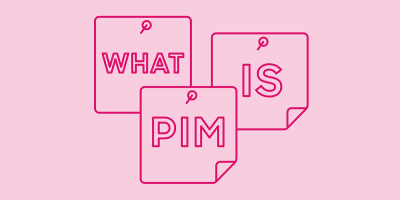
Enterprise Content Management System (ECM Software)

With paper almost extinct, your vital company documents and information need to be digitized, stored, and used in a way that supports transforming processes, workflows, and business goals. Enterprise content management (ECM) systems make it possible to rethink how you manage your enterprise content and choose more interactive ways to work with information across your organization.
Chances are, you use a digital asset management (DAM) system to handle your customer-facing content for products. But do you have centralized management for your internal documentation, invoices, training materials, contracts, financial records, etc.? If you want to reduce the time and cost it takes to manage all your content lifecycles, it’s time to think about ECM, too.
Keep reading and you’ll learn what enterprise content management is, see examples of software choices, and get an idea if it’s the right fit for your business.
What is enterprise content management (ECM)?
Enterprise content management (ECM) is the management, organization, and distribution of content and information across the entire digital asset lifecycle, from content and data creation to archive and disposal. It involves the capture, storage, and sharing of all your company’s vital content — from resumes and invoices to images and interview videos.
Your ECM software allows you to increase productivity and efficiency, give global teams access to the same content, and automate processes. With the right system, your headquarters in the US can make changes to documents and your global locations will have direct access to the same document versions in real-time.
For some companies, enterprise content management focuses on stacks of invoices and manufacturing purchase orders. For others, it’s the internal documentation that helps teams work together. Whether it’s internal or external customer-facing, it’s vital that your ECM software makes your business operations more efficient and helps encourage collaboration.
What is the role of enterprise content management?
Business operations are dependent on many sources of information to make them function smoothly. Let’s take the creative and marketing process as an example. In order to plan and execute a marketing campaign or site-wide sale, you need to create and coordinate a lot of content across multiple teams. And it’s vital that everyone can work together from anywhere in the world.
A marketing campaign can generate a lot of assets from the creative brief to the copy, images, video, and website assets. Where do you store all of this? If you just leave it on a workflow ticket or a desktop, it could disappear forever. An ECM platform combined with project management software makes sure your content is stored securely and can be easily referenced or retrieved in the future.
If you’re in medical, insurance, or finance your enterprise content management software is crucial to maintain compliance in everyday operations. Whatever your business requirements, there are trusted enterprise content management solutions on the market to meet your company's needs.
What are examples of enterprise content management systems?
Every organization has specific needs for content and collaboration so it's important to take time to pick the right ECM solution. What kind of security or compliance requirements do you need to meet? Which existing apps do you need to integrate? Do you have project management features or expect them as part of your ECM? Here are a few enterprise content management systems that could work for your business.
Confluence
Confluence comes from Atlassian (the makers of Jira) and is purpose-built for knowledge management and project collaborations. It’s an ECM solution with an intuitive structure that makes setup, creation, and discovery easy. Confluence makes it possible to share information between teams and the entire company.
Laserfiche
Laserfiche is a leading platform for smart content capture, intelligent document management, and enterprise process automation. It helps you simplify records lifecycle management, automate your everyday business processes, and integrates with the enterprise apps your teams rely on. From education to healthcare and insurance to wealth management, Laserfiche is a trusted ECM platform.
DocuWare
DocuWare digitizes and secures your business documents to help distributed and remote teams operate at full productivity. It’s an ECM software that provides document management and workflow automation solutions. It’s a smart home for your documents if you want your information secure, compliant, usable, and accessible from anywhere on any device, at any time.
Acquia DAM (Widen)
Acquia DAM brings your information together into one platform to help save time at every step of the content lifecycle. Its secure permissioning structure and sharing options eliminate bottlenecks by giving collaborators quick access to files from anywhere in the world. Acquia DAM helps teams scale by improving content workflows and driving operational efficiencies.
Looking for the right ECM software for you?
ECM software helps increase productivity and efficiency, gives global teams access to the same content, and automates processes. With the right software, you can reduce the time and cost it takes to manage all your content lifecycles across distributed and remote teams. If you’re in the process of selecting the best enterprise content management solution for your company it’s good to demo a few and see them in action.
More than 800 of the world’s most respected brands use Acquia DAM for enterprise content management. Request, watch, or click through a demo of Acquia DAM today to learn more about how it can centralize your content storage, automate workflows, and encourage collaboration across global teams.
Note: This article was originally published on Widen.com.



